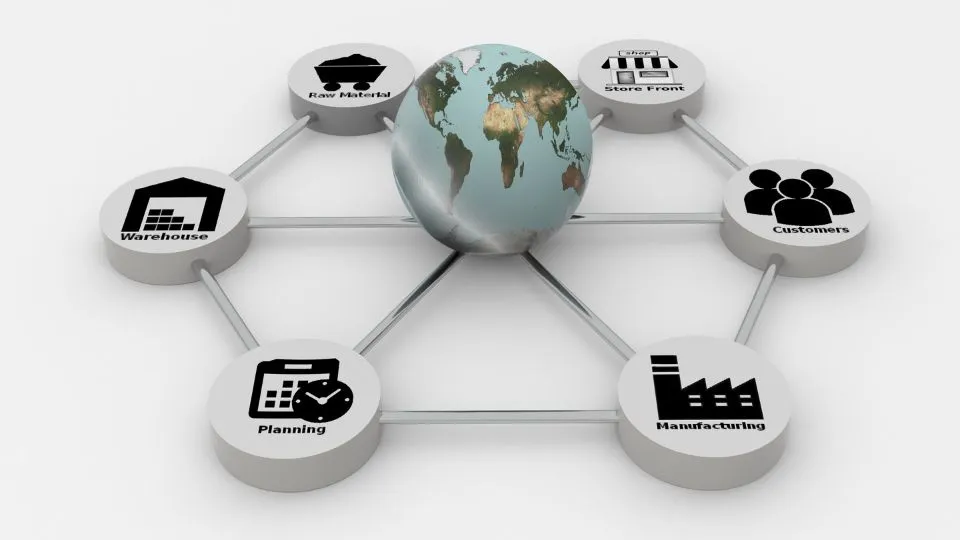In today’s digitally transformative era, businesses are adopting advanced tools to boost workflow efficiency. From accounting and performance tracking to human resources and productivity management, a wide range of innovative solutions is available to address every aspect of business operations.
While these tools offer significant convenience, managing them concurrently can become overwhelming. As businesses scale, the complexity of Data Management increases, leading to the need for a more integrated approach. This is where the demand for robust middleware, such as Enterprise Application Integration (EAI), emerges.
Decoding the Meaning of EAI
Enterprise Application Integration (EAI) is a process that connects and unifies multiple disparate software, tools, and applications, enabling seamless Data Integration across a single platform. The core purpose of EAI is to facilitate the sharing of resources, data, and processes across all software and applications, streamlining operations and reducing the complexities associated with managing multiple tools.
EAI operates on a centralized platform where Data Integration in the backend allows applications to communicate effortlessly. This innovative approach supports a wide range of applications, including:
- Marketing
- Accounting
- Customer relationship management(CRM)
- Supply Chain & Logistics
- Human Capital Management
- Enterprise resource planning (ERP)
- Billing and invoicing
- Productivity management
An added benefit of EAI is its ability to integrate both on-premise and Cloud Solutions.
Why Do Businesses Need Enterprise Application Integration?
Here’s a quick example illustrating the need for EAI in businesses:
Imagine a web development company using various tools for hiring, productivity management, accounting, and project management. Each tool holds its own set of data and accessibility features. When it’s time to credit employee salaries, the process involves manually checking multiple tools for CTC, performance, and accounting details. This constant juggling can be time-consuming and frustrating, especially as the business grows.
This is where Enterprise Application Integration becomes essential. As per recent stats, the enterprise application integration market is projected to reach $15.28 billion in 2024, with a CAGR of 15.65% expected through 2029. This rapid adoption of EAI is driven by its numerous benefits.
Core Benefits of Enterprise Application Integration
Reduced Data Silos:
When a data analyst requires data from multiple applications, switching between them can lead to data variance, inaccuracies, and redundancy. EAI centralizes all data, making it easily accessible and optimized for Granular Data Analysis. Real-time data changes become instantly visible, enhancing decision-making processes.
Improved Data Quality:
EAI is not just about combining software and application data in one place; it also improves Data Quality Management. The process includes validation, Data Standardization, and data cleaning to reduce errors and ensure consistency across formats.
Cost Savings:
A well-designed EAI system significantly reduces the time required for data collection and analysis. This directly boosts employee productivity, allowing more time for critical initiatives. Additionally, integrating legacy systems with modern ones can lead to substantial IT expenditure savings.
Streamlined Operations:
With clean and accurate data available on a single user interface, operations become more streamlined. Automated processes within EAI reduce the need for human intervention, increasing efficiency and enhancing customer satisfaction.
Challenges of Implementing Enterprise Application Integration
While EAI offers numerous advantages, it also presents certain challenges:
Complexity of Integration:
Data from various software and tools can exist in different formats and protocols, making it challenging to create a unified view. Integration complexity arises, especially when software is developed using different programming languages or by different vendors.
Expertise Issues:
Implementing EAI is not as simple as it appears. Integrating data from ERP Systems, CRM, and other software can lead to issues like data duplication, mismatches, and redundancy. These issues can compromise reporting accuracy and decision-making, necessitating the hiring of skilled software developers—a challenge in itself due to the shortage of expertise.
Data Security:
When integrating multiple systems, vast amounts of sensitive Customer Data are centralized. This can become a target for unauthorized access or theft. To mitigate these risks, stringent Data Governance and compliance policies must be followed, ensuring that sensitive information like payroll details and social security numbers remain secure.
Benefits and Use Cases of Enterprise Application Integration
Data is the cornerstone of modern business operations. Whether in telecom, manufacturing, automotive, or other industries, data analysis is vital for Forecasting Techniques, customer satisfaction, inventory management, and more. EAI plays a crucial role in optimizing these processes.
Manufacturing:
In the manufacturing sector, EAI can integrate systems like inventory management, IoT Sensors, connected workers, and Supply Chain & Logistics. This integration enhances operational efficiency and reduces costs.
Healthcare:
Healthcare providers can benefit from EAI by integrating electronic health records and billing information into a centralized system. This allows for faster Data Integration, enabling Real-Time Tracking and better patient care.
Telecom:
The telecom industry, a backbone of the economy, can use EAI to monitor network health, manage customer experience, and ensure uninterrupted services.
Finance:
In the finance sector, EAI can integrate accounting, CRM, ERP Systems, and other tools into a unified platform. This integration enhances transactional efficiency, Risk Mitigation, and Advanced Analytics.
INTECH Capabilities
For businesses looking to scale their operations, EAI can be a game-changer. Its integration capabilities streamline Data Management, enabling your workforce to operate more efficiently. However, given the challenges of EAI implementation, it’s essential to partner with experts who can provide strategic consultation, development, and integration services.
If you’re ready to leverage the power of EAI, INTECH is your go-to partner. Get in touch today!







